Excerpt: Shadow Places
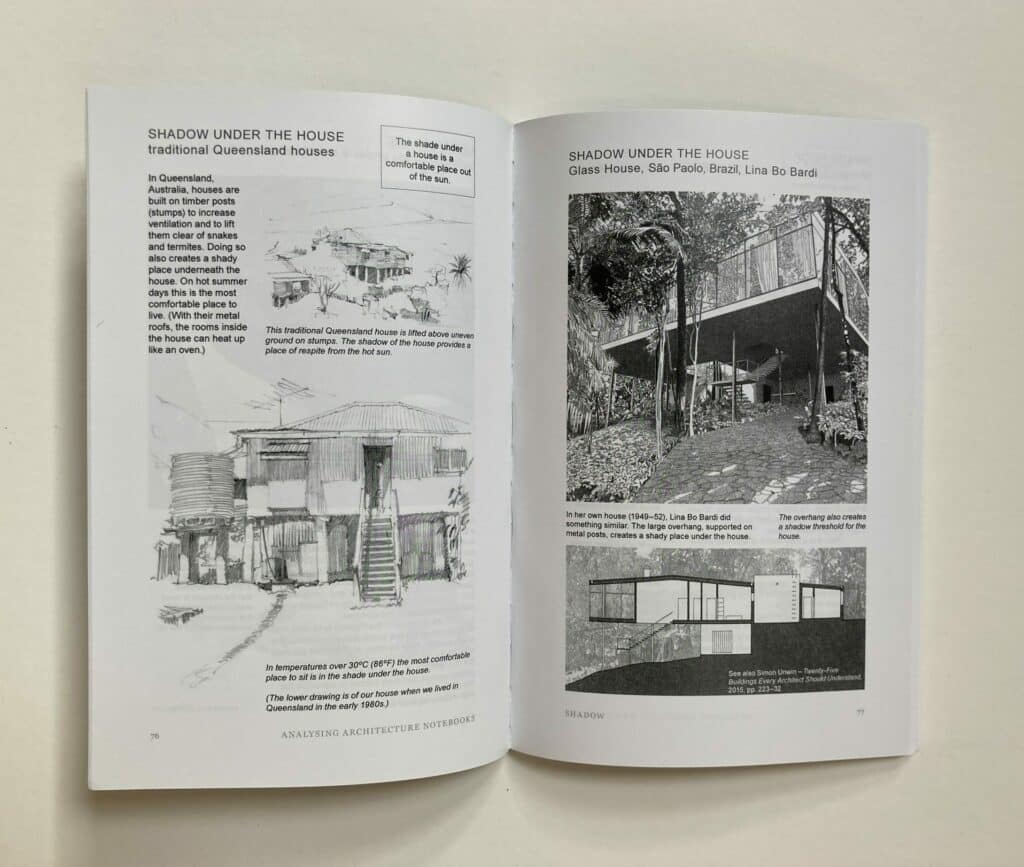
The following text is excerpted from Simon Unwin’s book on shadow, in his series Analysing Architecture Notebooks, available here. For 20% off until May 31st 2021, use code KHL20.
The piece is illustrated with drawings specially selected by Simon from the Drawing Matter collection.
‘Yea, though I walk through the valley of the shadow of death…’
Psalm 23.
Shadow is a common metaphor in literature, psychology, politics… But this Notebook is about actual shadow and its roles as an element of architecture. Metaphorical shadows are often if not always cast as negative. Since ancient times the prospect of death has cast its ‘shadow’ across our lives. Thieves and spies hide ‘in the shadows’ metaphorically as well as literally. Attention-grabbers like to ‘hog the limelight’ and put others ‘in the shade’. The trope ‘a shadow fell across her face’ suggests not an actual shadow (though in a movie that might happen) but a flicker of negative emotion – anger, fear, sadness, regret… Jungian psychologists say we all carry with us our own ‘shadow’ – the aspects (often perceived as negative) of our personalities that we hide away from ourselves as well as others.
We make sense of our world in terms of spectrums with binary extremes: positive—negative; good—bad; right—left; white—black; up—down; forward—backward; male—female; life—death; order—chaos; reliability—fickleness; love—hate; collaboration—competition; day—night; peace—war… Poets, politicians, bigots… find or try to assert correspondences (such is the stuff, and treachery, of metaphor) between the extremes: ‘white is good—black is bad’; ‘male is reliable—female is fickle’; ‘female is for peace and collaboration—male is for competition and war’… Examples are legion. And often the underlying sentiment suggests that while one end of the perceived spectrum holds moral virtue, the other is morally suspect.

Light—shadow is a binary spectrum with underlying moral connotations. It is associated, metaphorically, with some of those listed above. Light is good – revealing, rational, open, happy… Shadow is bad – concealing, superstitious, closed in, sad… Shadow is perceived as light’s negative, and as such its suspect, sinister opposite… even its enemy.
Moral connotations associated with metaphorical shadows can affect our attitudes to actual shadows. Yes, there are practical reasons why shadows can be problematic: it is difficult to work if you cannot see what you are doing; shadows provide hiding places for miscreants; the amenity of a house or garden is diminished if it is overshadowed. These problems contribute of course to the employment of shadow as a negative metaphor. But that contribution is reciprocated when we seek to obviate shadows: condemning them generally as ‘bad’ because of their metaphorical moral connotations; or deepen them because they provide cover for behaviour that we do not want to be seen too clearly (if at all). Law courts and government buildings are brightly lit because light is a metaphor for openness and scrutiny; night clubs are dark because shadow provides cover for bad dancing and intimacy; open-plan offices are evenly lit for practical reasons but also to imply egalitarianism; meditation spaces are dim to lessen distraction and impel our attention inwards.
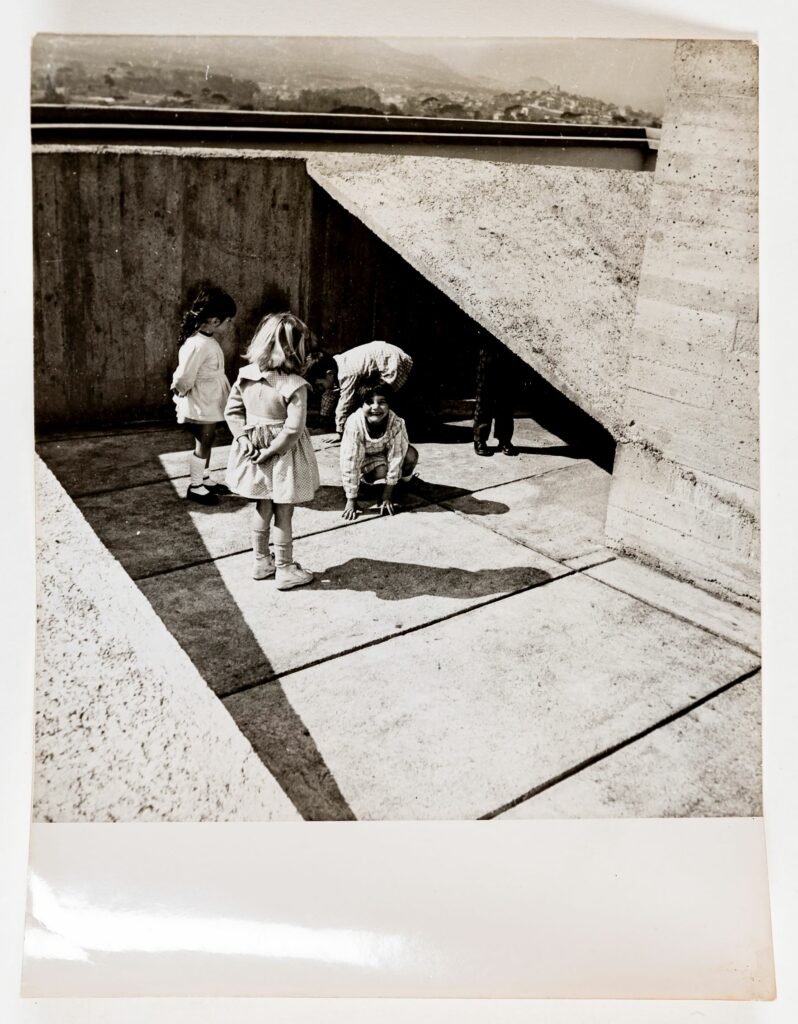
Shadows have a metaphorical role in the poetry of architecture just as much as in the poetry of words. After all, the narrative of Böcklin’s painting depends on the ‘Isle of the Dead’ being an identified place – a work of architecture – with the ‘deep shadow’ of death at its conceptual and physical core. But shadow is a practical and aesthetic element of architecture too. This Notebook is about what we, as architects, can do with actual shadows. And, in the main, it explores how shadows make a positive contribution to architecture. Le Corbusier famously described architecture as a composition of forms ‘brought together in light’.
‘L’architecture est le jeu savant, correct et magnifique des volumes assemblés sous la lumière. Nos yeux sont faits pour voir les formes sous la lumière; les ombres et les clairs révèlent les formes.’
‘Architecture is the masterly, correct and magnificent play of mass brought together in light. Our eyes are made to see forms in light; light and shade reveal these forms.’
Le Corbusier – Vers Une Architecture , 1923
(trans. Etchells –Towards a New Architecture, 1927.)
His statement can be interpreted as a musical metaphor: architects compose forms like composers compose music; the purpose of both is aesthetic before it is functional. With flutes and violins we play music; with architecture Le Corbusier suggests we orchestrate light. But in his second sentence – ‘light and shade…’ (in Etchell’s translation reversed from Le Corbusier’s ‘les ombres et les clairs’) ‘… reveal these forms’ – he implicitly acknowledges that the primary contribution of architectural forms in daytime is actually to obstruct and modify the sun’s light – i.e. to create and modify shadows. As Louis Kahn later said, ‘Our work is of shadow’, a statement that could be interpreted as metaphorical but will here be explored literally.
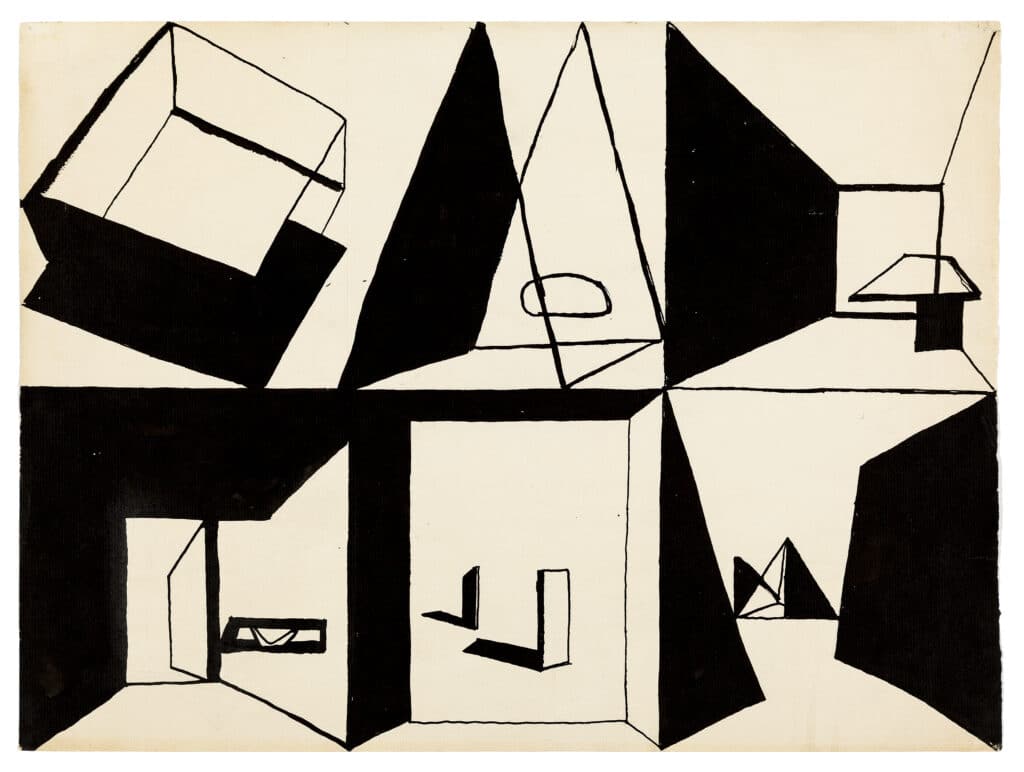
All art occurs in ambient conditions that it occupies, overlays, usurps, interacts with… For music the ambient condition is silence, represented by that moment of quiet just before the orchestra starts… (Except that some composers, John Cage for example, have experimented with the contribution ambient noise can make to music; e.g. Cage’s piece ‘4’33″’ consists of nothing but ambient sounds.) For drawing the ambient condition is usually white paper; though sometimes the chosen ground is black or coloured and different tonal grades of media are used. (The drawn equivalent of Cage’s ‘4’33″’ would be a blank, but maybe slightly creased or marked, piece of white paper: maybe Piero Manzoni’s ‘Achrome’, 1958; or Robert Ryman’s ‘Ledger’, 1982.) There are many dimensions to the ambient conditions of architecture – it exists in, contributes to and changes the full complexity of the real world – but a major one is light. For architecture in daytime the ambient condition is light from the sun and sky; at night it is darkness, and artificial light is needed to obviate that darkness and to cast shadows within shadow. Shadow is what I have (in Analysing Architecture) termed a ‘modifying element’ of architecture. Consequent on light that brings it into being, shadow modifies the places we make, contributing to their identity. This might happen by accident – without conscious intent – but the modifying role of shadow in the identification of place can also be determined by you the architect. Shadow modifies but it may also be modified.
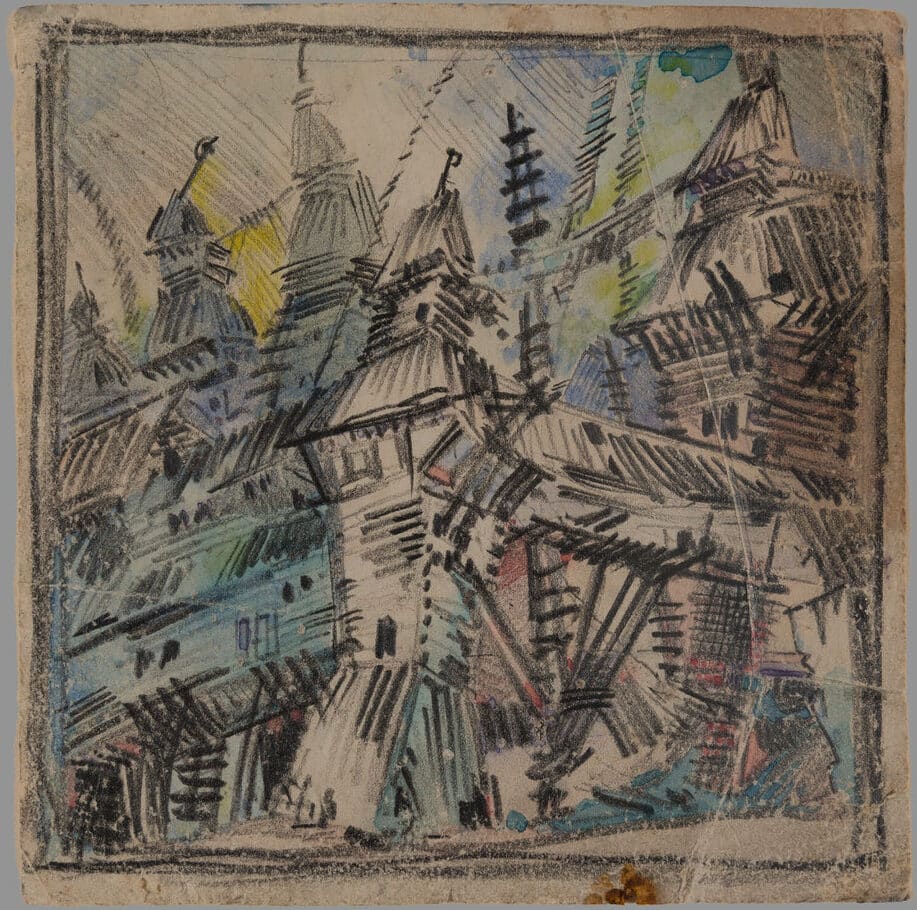
For good or ill, a primary result of architecture is to cause shadow. Shadow is an element of architecture. Light may be the ambient blanket under which architecture is created but, as Le Corbusier implies, the play of shadow is its voice and music, its delineation and modelling. By means of architecture we can engineer complete darkness or we can modulate shade with obstructions, openings, filters, artificial illumination and surfaces of varying reflectance. As in the yin-yang symbol, light and shadow are reciprocal, mutually interactive and interpenetrating. Architecture mediates: it is container, content and interface between the two. It is an instrument for playing shadow.
There are different kinds of shadow. Mostly we think in terms of shadows cast… shadows cast by ourselves or by objects, caused by obstructing a source of light and projected onto a surface – the ground, a wall or screen… In this sense things have shadows. But architecture contains shadows. Yes, buildings can cast shadows as objects but the surfaces of walls contain the shadows of their incisions and mouldings and, even more powerfully, the rooms within buildings have shadows as ingredients of their atmospheres. And atmospheres vary during the day, in different weather conditions and different parts of the world.

Architectural interiors are places of shadow: shadows modulated and shadows of immersion. Far from being negative, such shadows can be ingredients of the practical and aesthetic – as well as the metaphorical – power of architecture. In hot sunny places shadows help provide comfort (and reduce energy demand). Shadows provide psychological refuge. Shadow-play – of sun projecting the moving shadows of a tree on a wall; of a ‘searchlight’ sunbeam tracking through a dark room; the gradations of shade in a Japanese tea room… – contributes to our aesthetic appreciation of architecture.
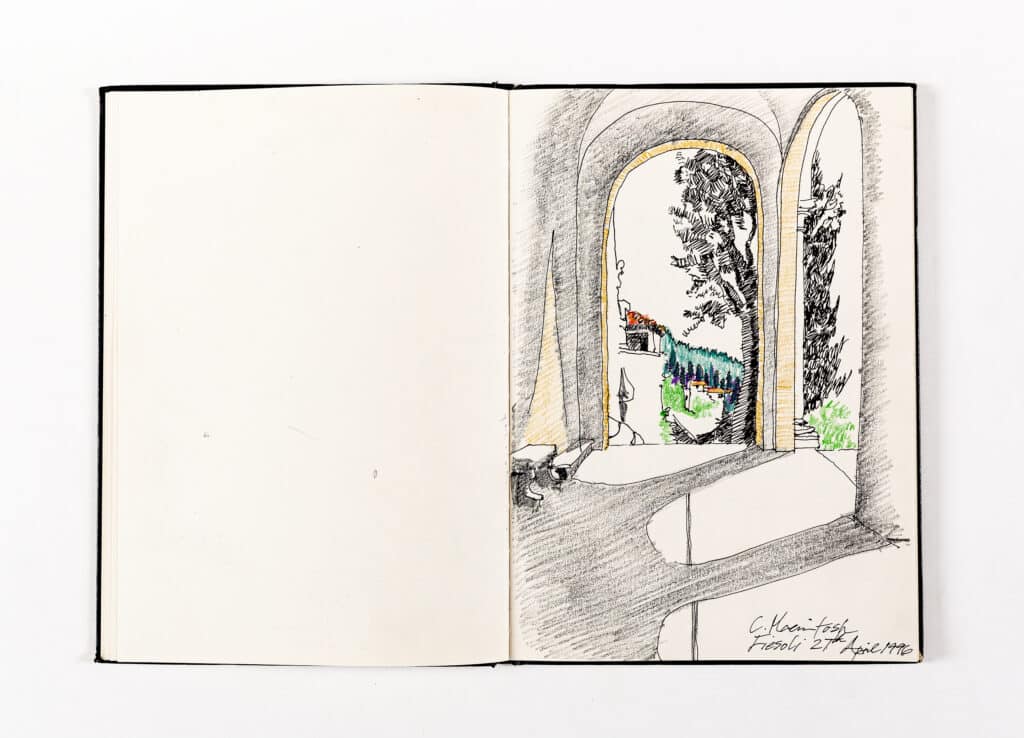
It is too much of a generalisation to suggest that twentieth-century Modernism despised shadow but there are some strands that avoided it. In painting for example, look at the abstraction of Picasso’s ‘La Rêve’, 1932; or the simplified colours of Patrick Caulfield’s ‘Oh Helen, I Roam My Room’, 1973. Modern music can be termed ‘atonal’ for its own reasons but it is so also because it might – as in the characteristic work of Arnold Schoenberg, Karlheinz Stockhausen or Philip Glass – lack the ‘light and shade’ of pieces from the eras of Bach, Mozart and Beethoven. In Modern architecture – perhaps to absolve the deep metaphorical shadows of two World Wars or perhaps to manifest an abiding desire for egalitarianism – shadow is often dispelled by large areas of glazing and bright even lighting. Modern architecture’s flat planar surfaces are characteristically conceived without intrinsic shadow.
Such banishment of a significant and useful element of architecture seems too harsh, even dogmatic. Perhaps shadow has served its ‘punishment’ for its association with all things negative. Maybe it is time to explore again its potential in architecture.

– Chase Galis